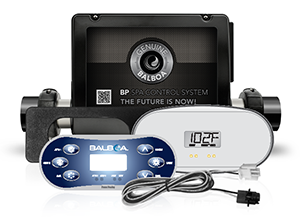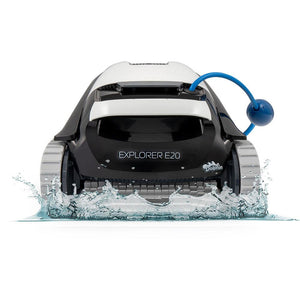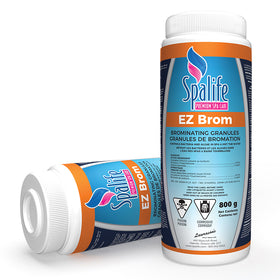Contact Us Free: (866) 316-9064
Monday - Friday
9AM - 5PM (PST)

How to Keep Your Hot Tub Safe With the Correct Hot Tub Chemistry
Mastering your hot tub chemistry is key to ensuring every soak is both safe and blissful. It's about more than just clear water; it's about creating a healthy, enjoyable environment for every dip.
Whether you're new to the hot tub scene or a seasoned pro aiming to perfect your routine, our guide is your go-to resource. Delve into essential tips on balancing water pH, managing total alkalinity, and the best practices for maintenance to keep your spa welcoming and hygienic. Ready to elevate your hot tub experience?
Continue reading for expert insights that promise to make hot tub care straightforward and effective.
Understanding Hot Tub Chemistry
Hot tub chemistry is about balancing the water to ensure it's safe and feels good for everyone who uses it. This balance involves managing several key factors, including pH levels and total alkalinity, which work together to maintain clear, clean, and safe water.
The Critical Role of Water pH
The pH level is a measure of how acidic or basic the water is on a scale from 0 to 14. For hot tubs, you aim for a sweet spot between 7.2 and 7.8, ensuring the water is neither too acidic, which could harm your skin and the hot tub's components, nor too alkaline, which can lead to cloudy water and scaling.
Regular testing and adjustment of pH levels are essential for keeping the water comfortable and protecting the equipment.
Total Alkalinity: The pH Stabilizer
Total alkalinity is closely related to pH but focuses on the water's ability to neutralize acids, acting as a buffer to prevent sudden pH shifts. Maintaining the right total alkalinity range, typically between 80 and 120 ppm (parts per million), is crucial for stabilizing pH levels. If total alkalinity is off, it can make adjusting pH levels more challenging and lead to fluctuating water conditions that are harder to manage.
Understanding and maintaining the correct hot tub chemistry is essential for a safe, enjoyable hot tub experience. By regularly checking and adjusting your water's pH and total alkalinity, you can ensure your hot tub is always ready for a relaxing soak. This balance not only protects the health of the users but also extends the life of the hot tub itself.
With a little knowledge and regular care, you can keep your hot tub in top condition for years to come.
The Essentials of Hot Tub Maintenance
Regular hot tub maintenance is key to ensuring your spa remains a safe, clean, and enjoyable retreat. By adhering to a few essential practices, you can prevent common issues and extend the lifespan of your hot tub.
Optimizing Water Circulation
Good water circulation is crucial for distributing chemicals evenly throughout the hot tub, ensuring every corner is sanitized effectively. Running the hot tub's circulation system daily helps prevent bacteria buildup and keeps the water clear. This practice not only aids in chemical distribution but also in filtering out debris, making maintenance easier and more efficient.
Strategies for Bacteria Control
Maintaining a hygienic hot tub environment involves more than just balancing chemicals. Regularly sanitizing your hot tub with the right products is essential for killing bacteria and preventing algae growth. Utilizing a combination of chlorine or bromine, shock treatments, and periodic draining and cleaning of the hot tub will ensure the water stays healthy and inviting. Additionally, keeping the filters clean and replacing them as needed plays a significant role in water quality.
Maintaining Filters and Water Quality
Keeping your hot tub's filters clean is crucial for water quality. Regularly cleaning and replacing filters as necessary prevents clogs and ensures efficient filtration. This practice, combined with balancing water chemistry and regular sanitation, forms the foundation of effective hot tub maintenance.
By adhering to these essential maintenance practices, including effective water circulation, bacteria control strategies, and diligent care of filters, you ensure your hot tub remains a delightful retreat. This commitment to upkeep not only enhances your hot tub experience but also extends the life and performance of your spa.
Key Chemicals for Maintaining Hot Tub Chemistry
Balancing your hot tub's water is essential for a clean, safe soaking experience. This balance is achieved with a few key chemicals, each serving a specific purpose.
Sanitizers: Keeping the Water Clean
Sanitizers are critical in your hot tub maintenance routine. Chlorine and bromine are the most common, effectively killing bacteria and other pathogens to prevent waterborne illnesses. The trick is to maintain a sanitizer level that's effective without being too harsh on the skin or causing damage to the hot tub components.
Balancing pH and Alkalinity: The Foundation of Water Chemistry
The pH level measures the water's acidity or basicity, and total alkalinity acts as a pH buffer, stabilizing the water's acidity levels. Keeping these in the right range is crucial for both water quality and the longevity of hot tub components. Too acidic (low pH) or too basic (high pH) water can lead to irritation for users and damage to the hot tub.
Adjusters are available to correct both pH and alkalinity levels, ensuring they stay within the optimal range.
The Role of Shock Treatments
Shock treatments are used periodically to break down organic matter and contaminants that sanitizers alone can't handle. This helps keep the water clear and free of odors. Regular shocking is a critical step in maintaining the overall health of your hot tub's water.
In summary, maintaining hot tub chemistry involves a careful balance of sanitizers, pH and alkalinity adjusters, and occasional shock treatments. Each chemical plays a role in ensuring your hot tub is safe, comfortable, and ready for use. Regular testing and adjustment of these chemicals will keep your hot tub in prime condition, ensuring many enjoyable soaks to come.
Balancing Water pH and Total Alkalinity
Achieving the perfect balance of pH and total alkalinity in your hot tub is key to ensuring optimal water chemistry. This balance is critical for maintaining water clarity, preventing equipment damage, and ensuring bather comfort.
Testing the Water
Start with a reliable test to measure the current pH and total alkalinity levels. Using test strips or a digital tester provides an accurate snapshot, which is foundational for making any necessary adjustments. It's advisable to test the water regularly, as factors such as usage, topping up water, and weather can alter its chemistry.
Adjusting Total Alkalinity
Total alkalinity serves as the stabilizing force for pH levels, preventing drastic fluctuations. If the alkalinity is outside the recommended range of 80-120 ppm, it needs adjustment. To increase alkalinity, you can add an alkalinity increaser, and to decrease it, adding muriatic acid or an alkalinity decreaser is effective. Adjust slowly, retesting after each application, to avoid overshooting the desired range.
Managing Water pH
After alkalinity is balanced, adjusting the pH is the next step. The ideal pH range is between 7.2 and 7.8. If the pH is too low, a pH increaser (usually sodium carbonate) can raise it. If it's too high, a pH decreaser (such as sodium bisulfate or muriatic acid) can lower it. Similar to alkalinity adjustments, make pH adjustments gradually and retest frequently to ensure the water remains within the ideal range.
The Interplay Between pH and Alkalinity
The relationship between pH and total alkalinity is intricate. Adjusting one can affect the other because alkalinity acts as a buffer for pH. This means if your alkalinity is correctly balanced, it's easier to manage and stabilize your pH levels, leading to a more enjoyable and safer hot tub experience.
Understanding and maintaining the delicate balance between water pH and total alkalinity are essential for keeping your hot tub's water in prime condition. Regular attention and adjustments as part of your maintenance routine will ensure your hot tub is always ready for a relaxing soak, providing clear, clean, and comfortable water for everyone.
The Role of Water Circulation In Hot Tub Chemistry
Water circulation plays a crucial role in maintaining the chemical balance and cleanliness of your hot tub. Effective circulation ensures that the chemicals are evenly distributed throughout the water, preventing the formation of bacteria hotspots and algae growth.
To optimize circulation, make sure to run your hot tub's pumps at least twice a day and consider the use of a circulation pump that operates continuously at low speed. Regularly check and clean the filters to maintain unobstructed water flow.
This proactive approach to water circulation will help keep your hot tub water clear, clean, and safe for everyone to enjoy.
Mastering Hot Tub Chemistry for Safety and Longevity
Maintaining the right hot tub chemistry is essential for both the safety of those enjoying the spa and the longevity of the hot tub itself. Regular testing and adjusting of hot tub chemicals are paramount for an optimal experience, ensuring the water remains clear, clean, and inviting.
At Pool Store Canada, we are committed to providing not only high-quality products but also unparalleled customer service. With our extensive range of products and fast shipping, we make hot tub maintenance easier and more efficient for our customers, ensuring they have everything they need to keep their hot tubs in top condition.
Ready to optimize your hot tub chemistry? Contact us today for expert advice and all your hot tub maintenance needs.



